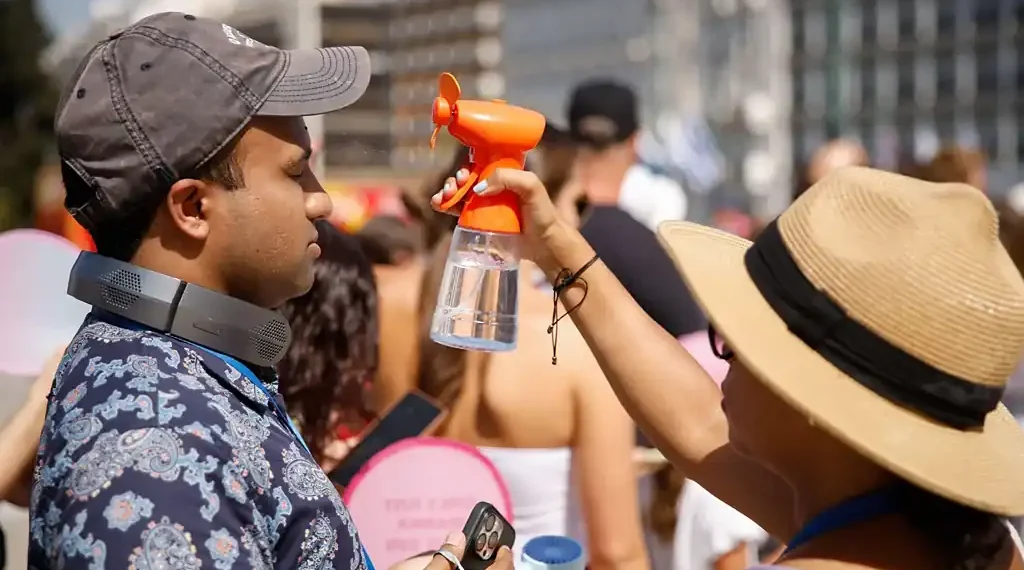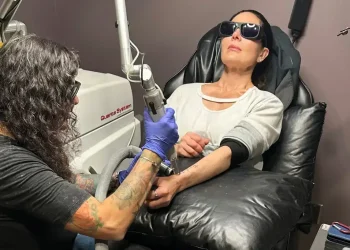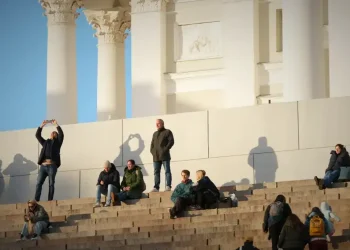How to travel safely under the Mediterranean sun this summer
July 27, 2025 – 9:24 AM
As Mediterranean heatwaves grow more severe, tourists heading to sun-soaked destinations like Greece, Italy, Spain, and France are facing dangerous temperatures. While the region’s stunning coastlines and historic cities still draw millions each summer, experts say planning ahead is now more important than ever to stay safe and healthy during your trip.
From choosing the right accommodations to adjusting your itinerary and recognizing signs of heat-related illness, here’s how to make the most of your Mediterranean holiday—without putting your health at risk.
Rising heatwaves across the Mediterranean
In recent years, parts of Southern Europe have experienced record-breaking summer temperatures, with multiple heatwaves pushing daytime highs well above 40°C (104°F). This year is no exception, with heat advisories issued across popular tourist regions and hospitals reporting spikes in heat-related illnesses.
“The line of the tropics has literally moved,” said Nick Cavanaugh, a climate scientist and founder of climate risk firm Sensible Weather. “Circulation patterns around the globe are shifting, and southern Europe is increasingly experiencing tropical-like conditions.”
These changes are especially risky for tourists, who may be unaccustomed to such heat or unaware of how it can affect their health. According to Dr. Olalekan Otulana of Cassiobury Court in the UK, travelers are often more relaxed about routines and hydration, making them more vulnerable to heat exhaustion or heatstroke.
Choose accommodations that beat the heat
Many tourists are surprised to discover that air conditioning is not guaranteed in European lodgings—especially in older buildings or budget accommodations.
“Electricity has always been very expensive in Italy,” said Andrea Moradei, founder of Florence-based travel company Vinarium. “Many of us grew up conserving energy—keeping shutters closed and only opening windows after dark.”
Moradei recommends looking for naturally cool accommodations, such as historic stone buildings or properties on hillsides with good airflow. Hotels with exterior shutters and cross-ventilation can also help keep rooms cooler at night.
Traveler Georgia Fowkes, who visited Greece last summer, described the struggle of staying in an overheated hotel. “Our AC groaned like a dying fan,” she recalled. “At one point, I lay down on the cool stairwell tiles just to get relief.”
Follow local customs and rest during peak heat
Across Spain, Italy, and Greece, locals often slow down after lunch to avoid the hottest part of the day. Shops and restaurants typically close between 1:00 and 5:00 PM, offering travelers the perfect opportunity to rest, nap, or recharge indoors.
“You can’t fill your day with too many activities,” Moradei advised. “It’s just too hot. Follow the rhythm of the locals and let some hours of the day slip away.”
In Italy, the tradition is known as pausa pranzo—a midday break often spent relaxing, reading, or planning the evening meal. Taking a short nap or retreating indoors can help maintain energy levels and prevent heat-related illness.
Plan smarter sightseeing
Trying to pack in too many attractions on a tight schedule can backfire when temperatures soar. Instead, experts suggest sightseeing early in the morning and choosing shaded or air-conditioned locations during peak hours.
Whitney Haldeman, founder of women’s travel group Atlas Adventures, described how her group adapted in southern France: “We shifted our tours to the early morning, prioritized shaded lunches, and added daily rest periods. Cool cellars for wine tasting and hotel pools became our sanctuaries.”
Museums and historic churches also offer cooler environments where you can still enjoy culture and history without risking your health.
Stay hydrated and know the warning signs
One of the biggest dangers in extreme heat is underestimating how much water your body needs. Dr. Otulana emphasizes the importance of drinking water regularly—even if you don’t feel thirsty. “Hydration is critical,” he said. “Keep sipping water throughout the day.”
Common signs of heat exhaustion include dizziness, nausea, headache, and heavy sweating. If symptoms progress to heatstroke—marked by confusion, loss of consciousness, or a lack of sweating despite feeling hot—medical attention is urgently needed.
“Extreme heat hijacks your whole trip,” said Fowkes, recalling her experience. “We weren’t sightseeing—we were surviving. Everyone was just looking for mist machines and hiding in grocery stores until the sun went down.”
Haldeman added that her group relied on hydration tablets, battery-operated fans, and lightweight natural fabrics to stay cool. “By day two, everyone wanted the guest who packed the portable fan,” she laughed.
Final thoughts: adapt and enjoy
With proper planning and realistic expectations, you can still enjoy everything the Mediterranean has to offer—without putting your health at risk. As climate patterns shift, being heat-aware isn’t just smart—it’s essential for safe, enjoyable travel.
Remember to:
- Choose accommodations with AC or natural cooling features
- Rest during peak heat hours, especially after lunch
- Prioritize shaded, indoor, or early-morning activities
- Stay hydrated and recognize the signs of heat-related illness
Enjoy your holiday—and don’t let the heat catch you off guard.
This article was rewritten by JournosNews.com based on verified reporting from trusted sources. The content has been independently reviewed, fact-checked, and edited for accuracy, neutrality, tone, and global readability in accordance with Google News and AdSense standards.
All opinions, quotes, or statements from contributors, experts, or sourced organizations do not necessarily reflect the views of JournosNews.com. JournosNews.com maintains full editorial independence from any external funders, sponsors, or organizations.
Stay informed with JournosNews.com — your trusted source for verified global reporting and in-depth analysis. Follow us on Google News, BlueSky, and X for real-time updates.














